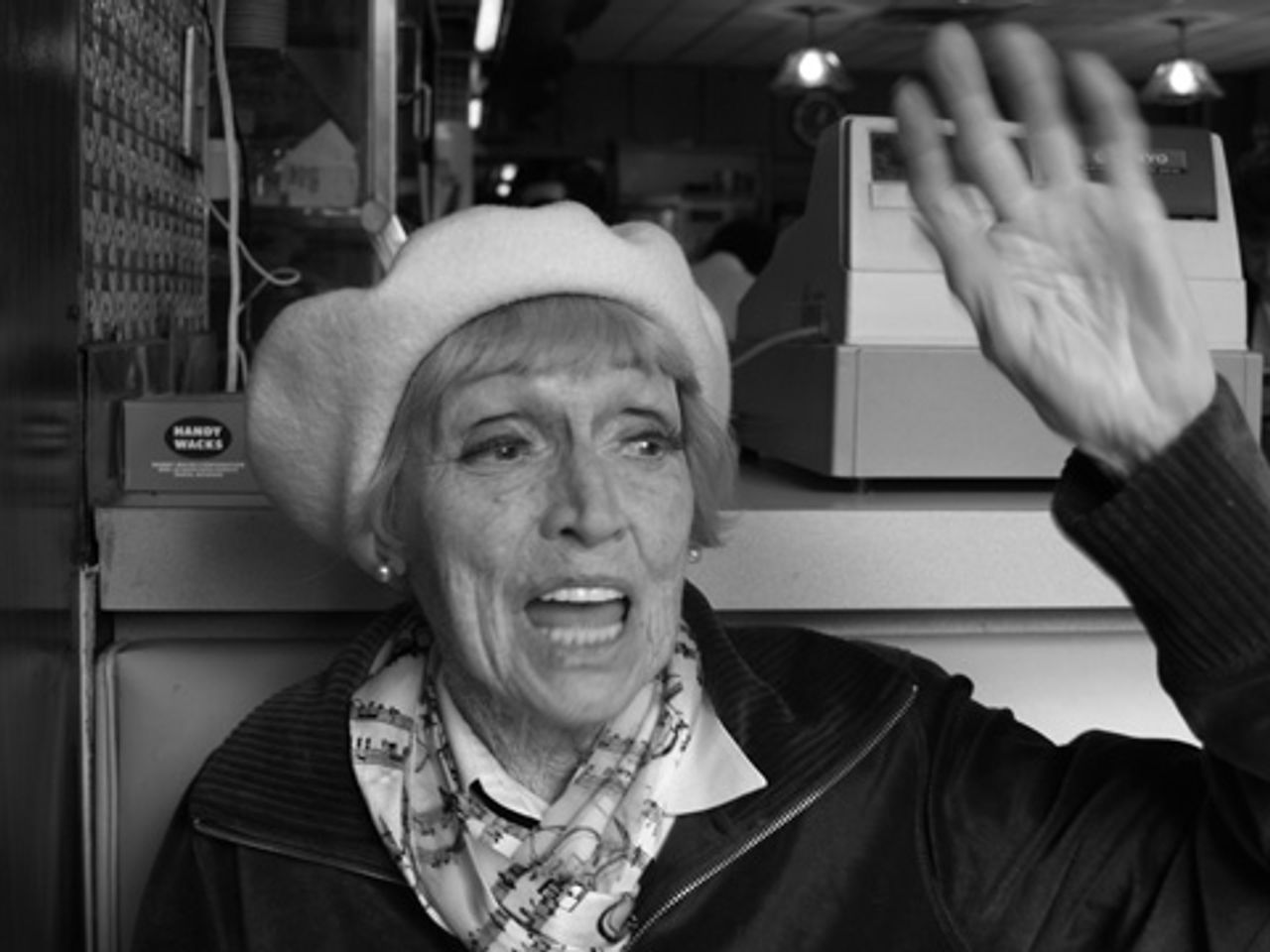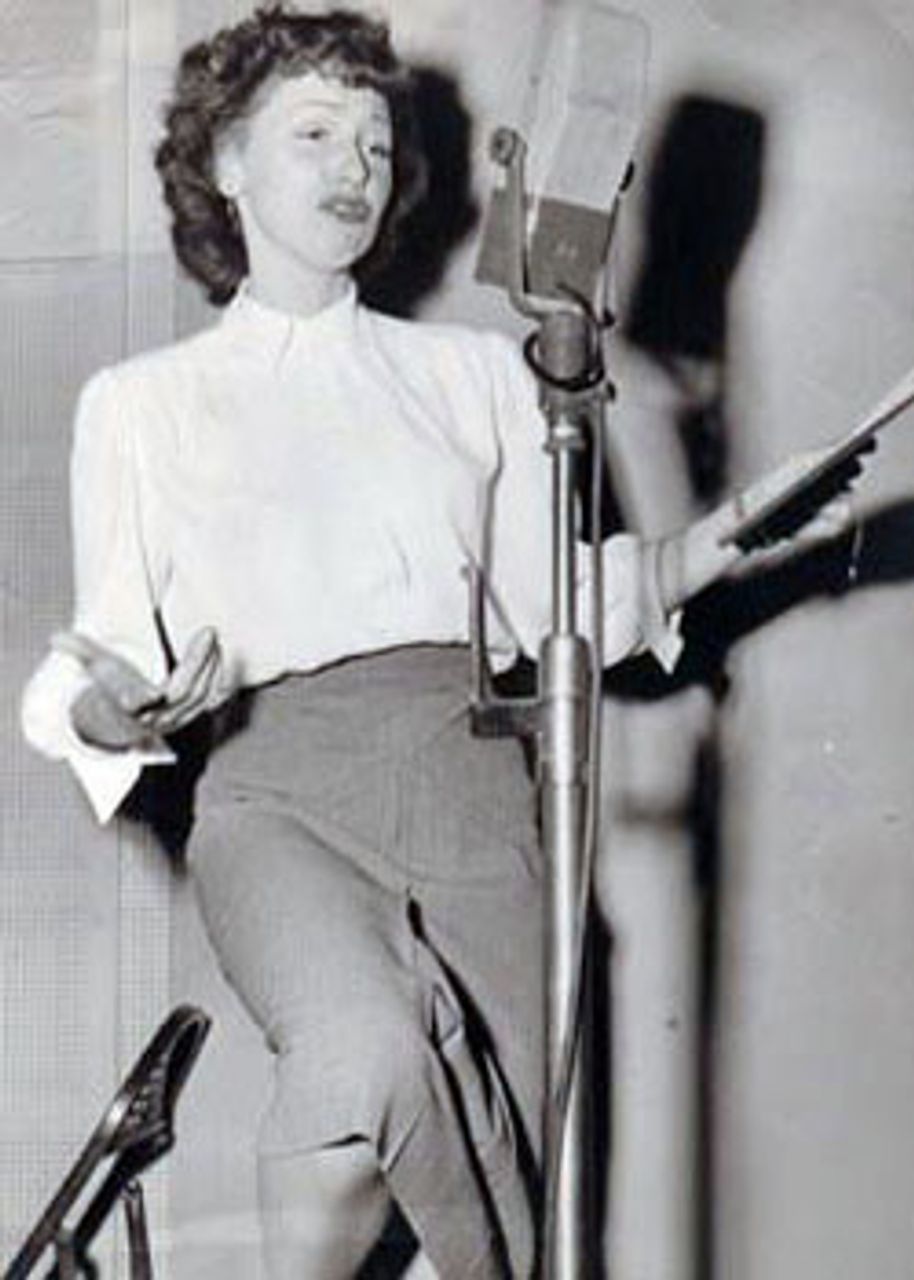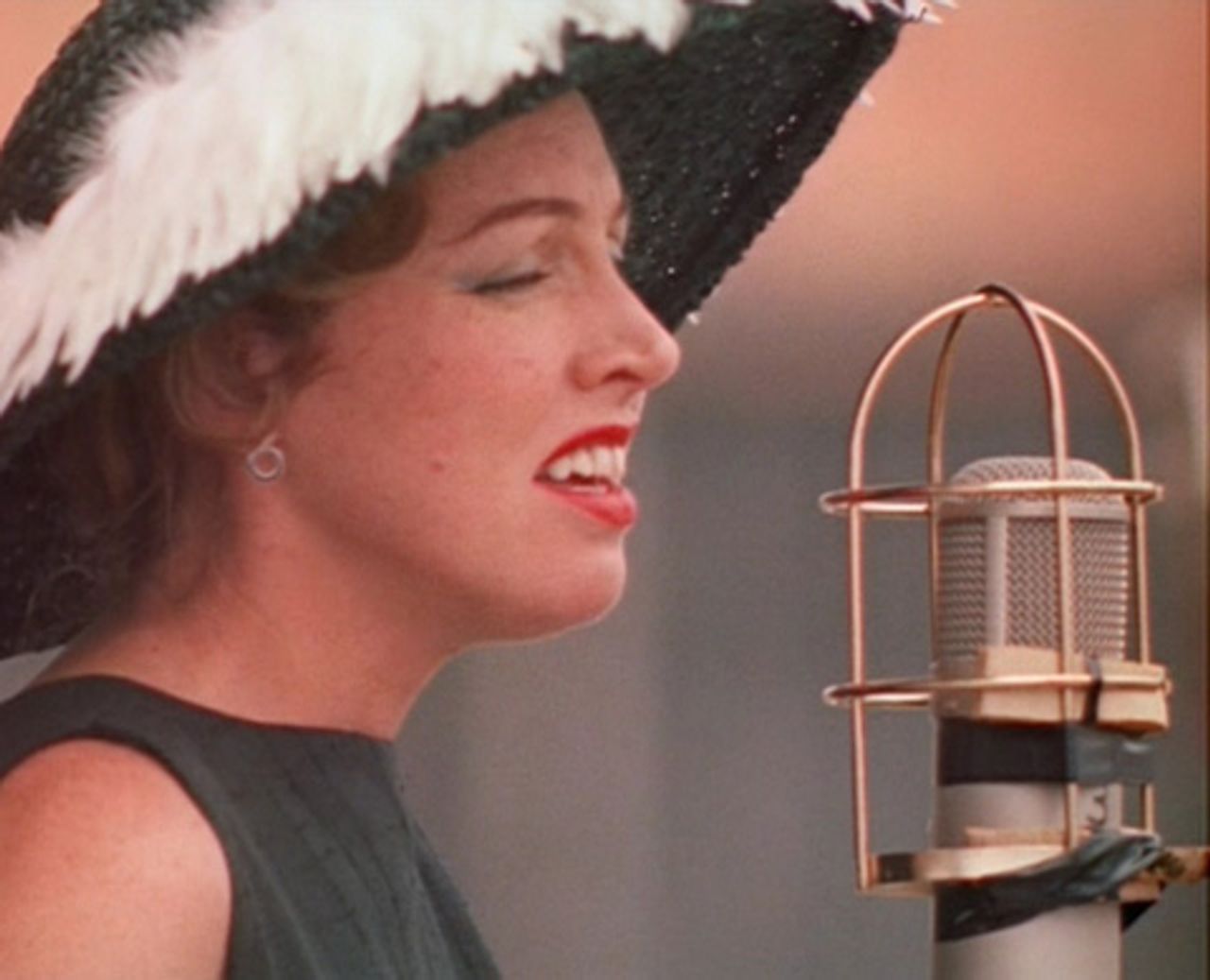The documentary film, Anita O'Day: The Life of a Jazz Singer, about vocalist Anita O'Day (1919-2006), has opened in various locations in North America. As we noted in our coverage of the Vancouver film festival in 2007, Robert Cavolina and Ian McCrudden's documentary, about the performer "whose career extended from the 1940s to the new millennium, presents a picture of an extraordinary woman: tough, resilient and enormously gifted."
In our comment on the film, we continued: "O'Day survived the ups and downs of life as a female in the music business, sexual assault, more than a decade of heroin addiction and a nearly fatal overdose from the drug. The groundbreaking duet with trumpeter Roy Eldridge from 1941 and her famed performance at the 1958 Newport Jazz Festival certainly stand out, but there are numerous remarkable clips of her singing and talking.
 Anita O'Day in 2005 (photo by Daniel Shen)
Anita O'Day in 2005 (photo by Daniel Shen)"Someone describes her as ‘a musician who used her voice as an instrument,' and fellow singer Annie Ross notes that there was ‘a whole life in that voice.' And it was some life."
(See "Vancouver International Film Festival 2007—Part 3: Some of the old problems, too")
At the time of her death in November 2006, we posted the following tribute to the singer. (See "An appreciation of jazz singer Anita O'Day, 1919-2006" 28 November 2006)
* * *
Anita O'Day, one of the great vocalists in jazz history, passed away Thanksgiving Day in a West Los Angeles convalescent hospital at the age of 87. She left no survivors. Her death from cardiac arrest due to pneumonia was announced by her manager.
Among the many so-called "canaries"—the female vocalists who sang for big bands during the Swing Era of the late 1930s and early 1940s—O'Day stood out for her hipness, musicianship, phrasing and sultry passion. With her trademark "one of the boys" attitude, O'Day typically wore a band jacket matching the uniforms of the instrumentalists over a plain blouse and skirt rather than the sort of the glamorous gowns favored by other female vocalists. Whatever might have been lacking in her dress and natural beauty, however, O'Day more than compensated with the brash sexuality and swagger that permeated her performances.
Born in Chicago, O'Day spent her teenage years hustling on the walkathon circuit, a masochistic endurance entertainment popular during the 1930s. She changed her surname from Colton to O'Day, she was fond of saying, "because in pig Latin it meant dough, which was what I hoped to make."
 Anita O'Day
Anita O'DayO'Day catapulted to fame in 1941 when Gene Krupa, the flashy drummer for the popular Benny Goodman Orchestra, hired her to front his own big band. In an extremely bold move for the time, Krupa integrated his otherwise all-white band with Roy "Little Jazz" Eldridge, among the best Swing Era trumpeters, and paired him with O'Day in a suggestive interracial duet on "Let Me Off Uptown."
After her spirited vocal, Eldridge sings "Anita, Anita ... I feel like blowing." She replies, "Well, blow, Roy, blow," launching another of his memorable, stratospheric solos. The song was a huge hit for the Krupa band.
O'Day next fronted the more modern orchestra of Stan Kenton, scoring another big hit with the million-selling but forgettable "And Her Tears Flowed Like Wine." Down Beat magazine named her Top Girl Band Vocalist for 1945.
Replaced in the Kenton Band by June Christy, an inferior singer, O'Day moved on to the progressive Woody Herman Herd and then worked as a single, deeply involved with the blossoming bebop movement in New York City. One recently released live recording captured her October 1948 performances at the legendary Royal Roost on Broadway near 52nd Street with the Tadd Dameron Quintet, featuring star trumpeter Fats Navarro and tenor saxophonist Allen Eager.
While assimilating the rhythmic and harmonic complexities of modern jazz, O'Day also picked up one of the more unfortunate side effects of the 1940s jazz lifestyle, a substance abuse problem that resulted in three incarcerations, two nearly fatal accidents, and more than 10 years of heroin addiction.
 Anita O'Day performing at the 1958 Newport Jazz Festival
Anita O'Day performing at the 1958 Newport Jazz FestivalHer personal difficulties, which also included sexual assaults, backroom abortions and failed marriages, were recounted with harrowing detail in her 1981 autobiography High Times, Hard Times, which made the New York Times bestseller list.
Impresario Norman Granz, who promoted Charlie Parker, Lester Young, Billie Holiday and other jazz giants with similar personal problems, signed O'Day in the early 1950s and produced a string of 20 successful record albums over the next decade. This outstanding oeuvre compares favorably with the contemporaneous output of fellow Granz artist Ella Fitzgerald, as well as those of male singers Frank Sinatra, then in his prime, and Mel Tormé.
For material, O'Day would move among the classic songwriters, Rodgers and Hart, Cole Porter, Gershwin, and so forth, while mixing in unabashed jazz performances such as "Four," the Eddie Vinson tune made famous by Miles Davis, or Jimmy Giuffre's remarkable "Four Brothers." Her arrangers were top notch, the likes of Marty Paich and Billy May.
O'Day's voice was low and somewhat gravelly, and her range limited. She lacked vibrato because of a botched tonsillectomy. She could, however, sculpt lovely lines of rapid-fire syllables, bending and tweaking the lyric and melody in surprising yet pleasant and logical ways. The words seemed compressed into a miasmic stream of undulating sound, while the lyric still came through. Although her pitch sometimes wandered, her sense of swing was impeccable. O'Day would not so much sing a song as disassemble it, only to reconstitute the composition in a manner that released deeper and more profound emotions than the original.
"When you haven't got that much voice, you have to use all the cracks and the crevices and the black and the white keys," O'Day once told an interviewer. "That's all the range I've got. I'm no Lily Pons or Sarah Vaughan."
An excellent example of her unique style appears in Jazz on a Summer's Day, Bert Sterns' documentary on the 1958 Newport Jazz Festival. With the camera focused close-up on her face poking out from an oversized, floppy, feathery black-and-white hat, an obviously stoned O'Day sensually squeezed out a completely unorthodox, yet beautifully languid "Sweet Georgia Brown."
Despite failing health, O'Day continued to perform in Los Angeles-area venues until a few years ago. Her last album, ironically titled "Indestructible!" was completed on her 86th birthday and released just last April. While one might admire her spirit, these later performances are excruciatingly bad, and highly embarrassing. Retirement would have made more sense in this case.
The passing of O'Day is another reminder of the great epoch of jazz and the classic American popular song that both blossomed and withered during the 20th century.
